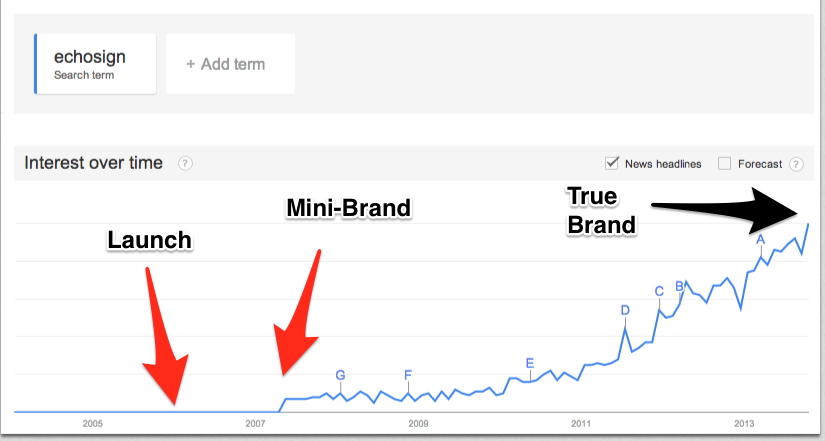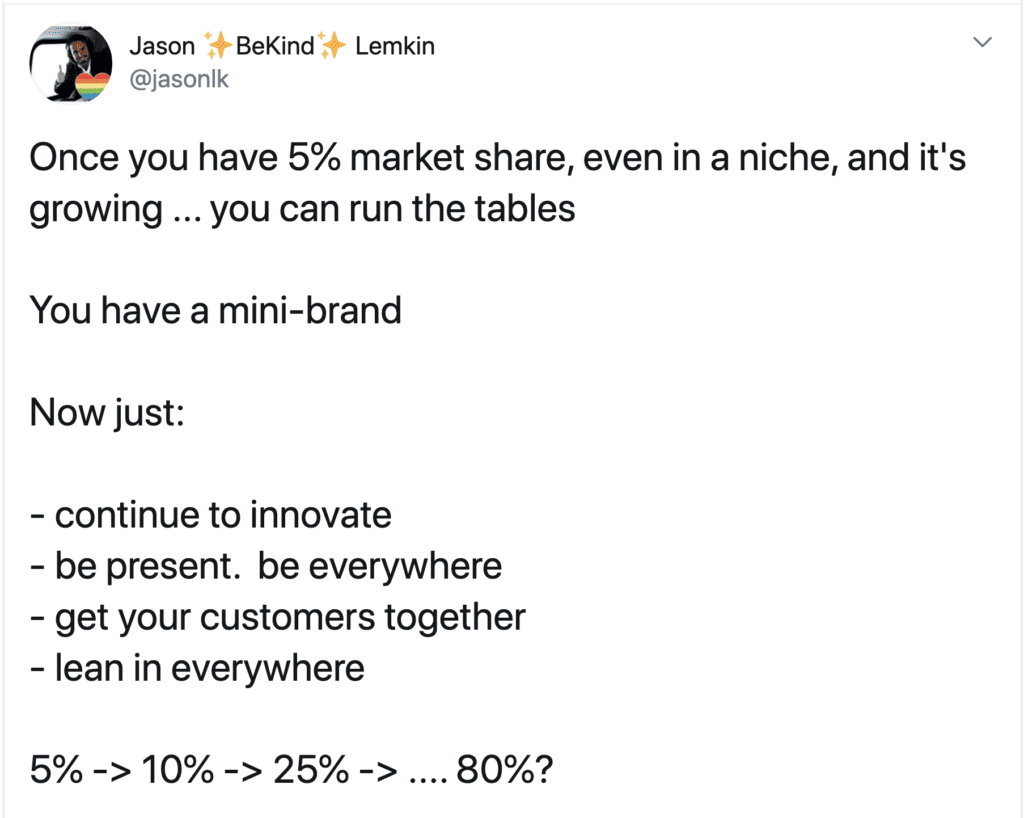If you’re selling to the enterprise, or even just anywhere in B2B, most start-ups in the first 12-18 months end up in a Conundrum.
The good news is if you get anywhere at all in SaaS in the early days, you’ll have a handful of customers. Which is great. In fact, it’s amazing. Getting a handful of businesses to buy Yet Another Web Service or Pay For Yet Another Business App is borderline impossible. Who needs to buy yet another product in their business? And you did it.
And yet …
It probably won’t be enough. 10 customers, 100 customers, whatever the number is. It’s not scaleable. In fact, if you look at the raw numbers, it may seem like you will never get there, to a Big Business.
I get it, I’ve been there. In fact, most of us have.
The best advice I can give you is, understand that once you have a Mini-Brand, it will get better. And easier.
Sales is always hard
SaaS is always hard
But there is a moment in time when your brand kicks in
When it gives you a real tailwind in sales, in marketing, in partnerships
Really lean in when you see it, feel it, and know it
— Jason ✨Be Kind✨ Lemkin (@jasonlk) May 12, 2022
A Mini-Brand isn’t a real brand in the sense everyone has heard of it, like Salesforce or Google.
What a Mini-Brand is, is when at least a handful of folks in your core, target customer audience begin to hear about you. Just some, just a few. And then, they start to come to you, to learn more.

At first, you’ll get 1 or 3 or 5 leads from it. Not enough. But at least some.
And that won’t grow fast enough, at least not from a founder’s perspective. The model may not work in your head. It’s not scaling fast enough.
But trust me. If you serve those customers well, and remain innovative — you most likely will build to and have a Mini-Brand.
From there, you’ll accelerate, if only slowly at first. And that’s when the next bit of magic starts, even if you can’t see it yet. Because SaaS compounds.
So net net: you did the impossible. You got real, paying enterprise customers. Now, you need to stay focused. You need to stay in the game even if it seems like you won’t ever get big enough:
- Service those customers well. Overstaff in customer success. Do QBRs with your largest customers. Invite them to reviews of your roadmap. Don’t raise prices on them without providing more value. They are your super-advocates. Treat them that way.
- Get to know your customers personally where you can, at least by Zoom. Call them. Talk to them. Early customers love to get to know the founders. It’s key. They took a risk on you. Pay it back. Talk to 6 customers a week, 10 if you can. Zoom makes it easy. I never lost a customer I met with myself as CEO. They stuck with us, even in tougher times. More on that here.
- Follow up on every possible lead with 10x the enthusiasm you might otherwise. Once you have something, lean in even harder on every organic lead that comes in. Call them back in minutes. Answer every chat in real-time. Do a demo for anyone that wants one. Even if the dollars are small. Happy customers compound once you have a mini-brand.
- Get out there and talk about your product all the time, to anyone that will listen.
- Bring your customers together, at a customer event. Digital is fine. Get them talking to each other, sharing stories and best practices. Invite your top prospects, too. They tell some of their business friends. Enough to keep accelerating the growth of your mini-brand. More here.
- Remain innovative on the product side. Never stop shipping great features your customers will love. That pays the early loyalty back.
If you do that, and the world doesn’t change from under you … you’ll get a Mini-Brand. Not in a day, but in time. And things will begin to get scaleable from there.
Question @jasonlk @saastr to @ericsyuan @zoom_us why the #ads and billboards & the effect of brand on #sales cycle? https://t.co/Zmn0r1gNmO pic.twitter.com/1CuQoc2rcf
— Harry Stebbings (@HarryStebbings) January 26, 2017


